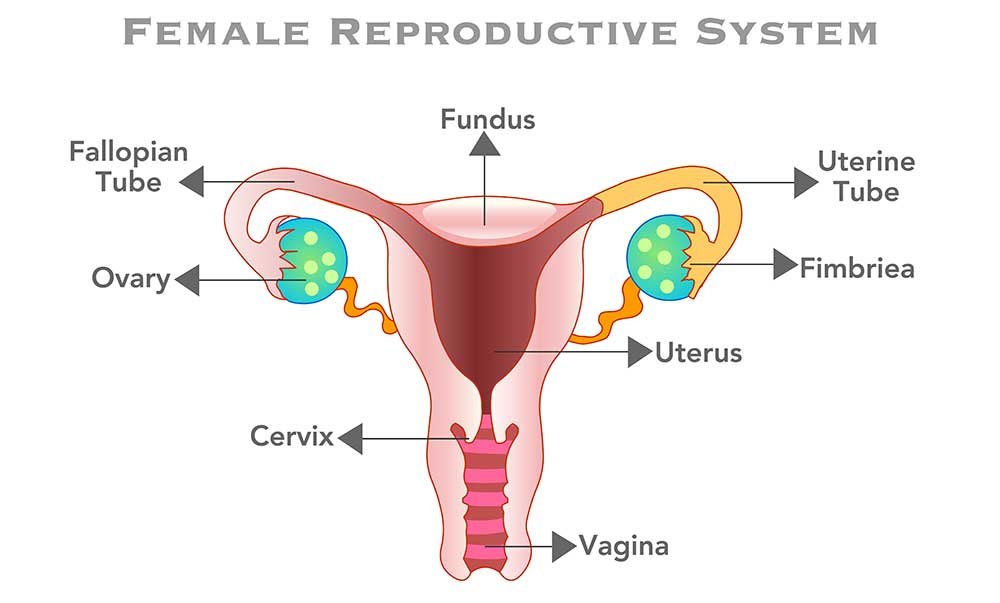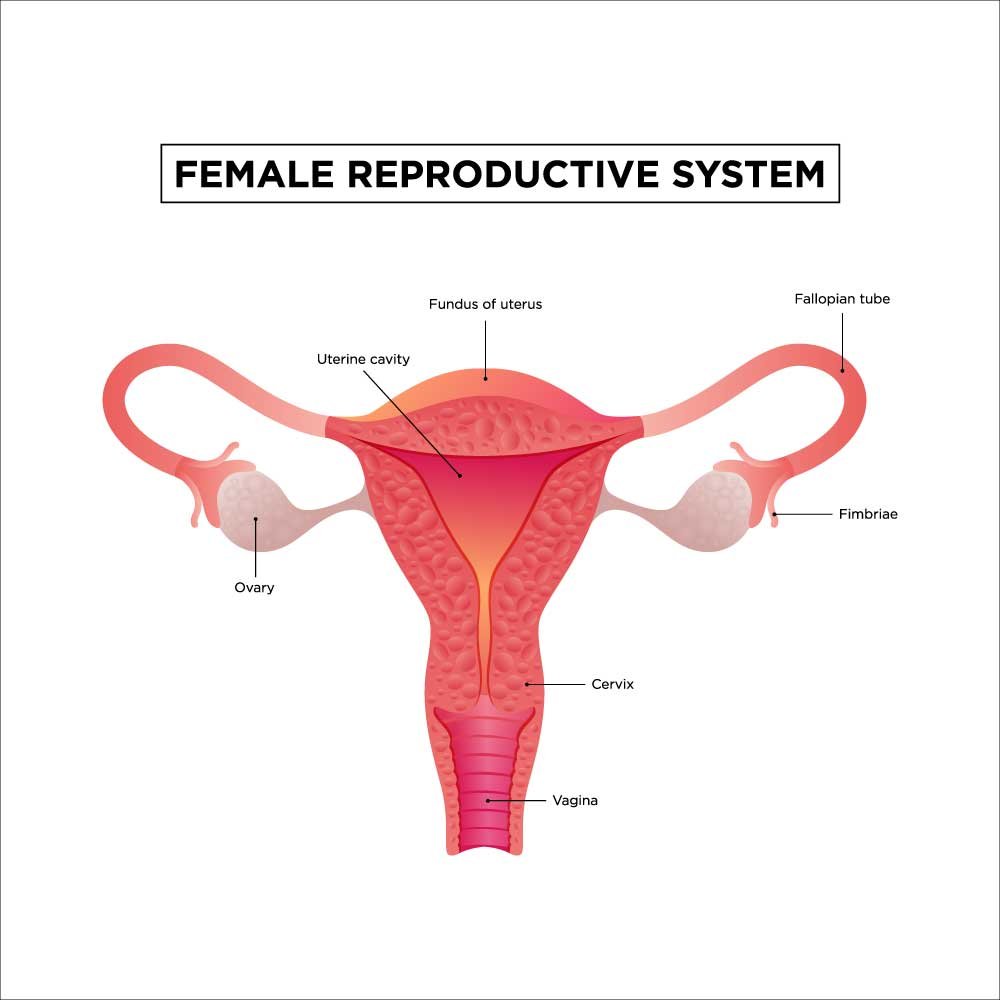The Anatomy of Labor: Building the Fundus to Open the Cervix
Most expectant parents are familiar with the cervix and the way it dilates before a baby is born. But did you know that the cervix and the fundus are extremely important parts of the uterus? They both play key roles as they work individually and together during labor.
In fact, these two anatomical structures help to build, maintain, and produce a safe and healthy pregnancy, labor, and delivery. In this blog, we’ll take a detailed look at the cervix and the fundus, including how they complement each other. You may be surprised at how much you thought you knew and how much more you learn.
Let’s dig in, but first, we begin with the basics.
What is the Cervix?
By definition, the cervix is simply the narrow opening at the bottom of the uterus. Sometimes referred to as the neck, the cervix bridges the vagina to the uterus and is a very important part of reproductive and sexual health.
The cervix is approximately one inch wide and the same length. Think of the cervix like a security guard, standing at the entrance of the uterus, dictating what can go in and what can come out. With jobs such as allowing menstrual blood to flow out of the uterus and keeping bacteria from entering the womb, it also allows sperm to enter the uterus and produces cervical mucus in the fertile phase of the menstrual cycle to help the sperm along.
“In order for the cervix to open, the uterine fundus has to build up during contractions. Every time a contraction takes place, muscles pull up from the cervix and build on the fundus. ”
What Does the Cervix Do During Pregnancy?
During pregnancy the cervix creates an abundance of mucus, commonly referred to as a mucus plug. This plug creates an extra layer of protection to the growing embryo from infection or foreign objects.
Perhaps the cervix’s biggest claim to fame is the way it dilates and effaces during labor. To dilate is to open, while effacement refers to the thinning of the cervix. The diameter of dilation during various stages of labor has been a popular medical assessment in determining how labor is progressing. The cervix normally remains closed during pregnancy, but as the early stages of labor begin, the cervix begins to open. This dilation is measured in centimeters — from 1 centimeter all the way up to 10 centimeters.
What is the Uterine Fundus?
The word fundus simply means the farthest part from the opening of an organ. Since we have more than one fundus in our bodies, it’s best to specify that we are describing the uterine fundus. It’s dome-shaped and sits at the top of the uterus.
Like the cervix, the uterine fundus is important in reproductive health, too. Not only does the fundus help balance appropriate hormones during pregnancy, it also aids in protection of the fetus.
What Does the Fundus Do During Pregnancy?
The fundus is used to help estimate how your baby is growing and to determine the position of your uterus. Fundal height is a common term that providers use at prenatal appointments, beginning at around 20 weeks’ gestation until the end of pregnancy. To calculate fundal height, a provider uses a flexible tape measure and vertically measures the length of your abdomen from the top of the fundus to the top of the pubic bone. This number, measured in centimeters, should align with how many weeks’ gestation you are. For example, if your provider measures 24 centimeters from the top of the fundus to the top of the pubic bone, you are expected to be around 24 weeks gestation. If your fundal height measurement is more or less than your gestation, your provider may want to further evaluate you.
Even though the fundus and cervix are both parts of the uterus, it may seem as though they have separate roles in pregnancy, and they do, that is, until they don’t. Once the stages of labor begin, these two pieces of anatomy partner together as a magnificent team to aid in the birth of the baby.
How Do the Fundus and Cervix Work Together?
Many of us have learned that once the cervix dilates to 10 centimeters, birth is imminent. It’s as if the cervix just opens and the baby follows. In fact, in many medical settings, the stage of labor is determined by uncomfortable physical exams that assess cervical dilation and effacement. The combination of those two results have dictated approximate birthing times — however, with fault.
The human body is unique to everyone. A birthing parent may dilate from 1 to 10 centimeters in an hour, while others experience the same progression over the course of days or even weeks. We must also consider that the cervix can be manipulated, leaving its dilation status alone to be an inaccurate predictor of active labor or imminent delivery. While dilation itself is an important factor in labor progression and delivery, it is secondary to the fundal contractions that allow that process to happen. What does that mean? During labor, the cervix does not just open on its own.
How Does the Cervix Open?
Giving birth at Magnolia Birth House with doulas and midwives.
In order for the cervix to open, the uterine fundus has to build up during contractions. Every time a contraction takes place, muscles pull up from the cervix and build on the fundus. This building of muscle causes added pressure, which pushes the fetus lower. The combination of the muscles pulling up and the fetus moving down opens the cervix. Without the natural physiological process of building up the fundus, the cervix cannot and will not dilate.
This is why measuring dilation alone is not an accurate predictor of delivery status or time and varies from birthing person to birthing person. It’s also why regular, invasive cervical assessments to check for dilation progress are not required to have a healthy delivery. Instead, the focus should be transferred to the mental and physical strength of the birthing person, so their body has the energy to do the miraculous job it has been designed to do.
Here at Magnolia, we believe not only in the strength and power of your body to do what is natural, but also in its intelligence to do so. Knowing that dilation is secondary to building the fundus — with active, steady and consistent contractions being a primary indicator of this process — decreases interference with the body’s natural ability and reduces the need for invasive exams.
Miami’s Premier Natural Birthing Center – Prenatal Care and Birth Services in Miami
Sometimes we must scratch all that we are told for what we actually learn. If you’re ready to learn more about this physiological process and how Magnolia fosters healthy pregnancy and natural birthing, request a free consultation by calling 786-953-6534 or filling out our form.








